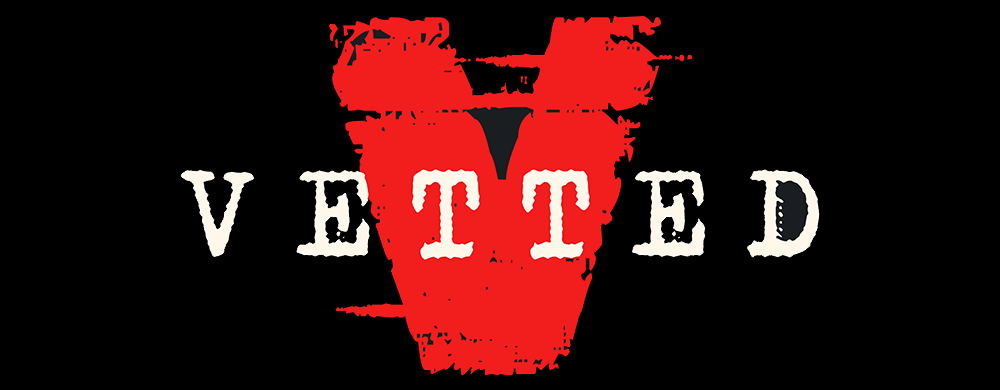Simon Holland Reveals Shocking UFO Secret
The Next Frontier: Are We Really Communicating with Aliens through Quantum Tunneling?
Imagine waking up to the headline: Scientists are testing a new device that could break the ultimate boundary and allow humans to communicate with extraterrestrial intelligence. Sounds like a plot from a sci-fi blockbuster, right? Well, buckle up, because the buzz is that this is already happening—and the implications could be more mind-bending than you think.
Recently, the popular YouTuber and commentator Patrick from Vetted broke down claims made by Simon Holland, another well-known voice in the UFO and extraterrestrial community. In a series of videos, Holland suggests that a secretive European group has developed a cutting-edge technology, using quantum tunneling, to contact non-human intelligence by modifying radio telescopes. If this sounds wild, that’s because it is. But the topic opens a whole can of cosmic worms that we have to explore.
Breaking Boundaries: The Mysterious New Device
Holland claims that European scientists have equipped radio telescopes with a type of transmitter and receiver based on quantum tunneling, designed to do what traditional electromagnetic signals cannot: open a line to extraterrestrial civilizations. The secrecy surrounding the project is palpable—names are withheld, groups remain anonymous, and circles of researchers are sworn to silence. Still, he mentions the name of the technology’s inventor, Gunter Nimitz, who apparently demonstrated this quantum tunneling receiver to enthusiastic researchers at Europe’s SETI (Search for Extraterrestrial Intelligence) initiatives.
SETI, as you may know, spends its days scanning the sky for whispers of life using radio waves, lasers, and even biosignatures. But according to Holland, the real game-changer isn’t just upgrading the antenna—it’s stepping outside the entire playbook of known physics. Quantum tunneling, he argues, could offer a direct channel—a cosmic hotline—that circumvents the usual obstacles of distance and signal decay. The possibilities? Staggering. The risks? Perhaps just as enormous.
Quantum Tunneling: ‘Spooky Action’ or Serious Science?
To understand why this idea is electrifying, it helps to know a bit about quantum tunneling. Simply put, this phenomenon allows particles to slip through barriers that would be insurmountable under classical physics. In the everyday world, this might sound impossible, but in the quantum realm, it’s business as usual.
The mind-boggling aspect comes when you realize the implications of using this for communication. Imagine poking a stick so long it spans to another planet, and, miraculously, when you nudge one end, the other end moves instantly—regardless of distance. That’s Holland’s analogy for quantum tunneling communication: distance shrinks to irrelevance, and the signal, in theory, travels not just at the speed of light, but instantly.
If we’re genuinely using such technology, the familiar limits of electromagnetic communication are out the window. It’s no longer about how hard you can shout into the void, but about tapping into a quantum connection where time and space aren’t barriers. But there’s a flip side to this sci-fi scenario.
Should We Do This? The Ethical Wild West
Of course, the remarkably advanced nature of quantum communication raises almost as many questions as it answers. Chief among them: just because we can, does that mean we should? Holland—channeling a warning borrowed from Jurassic Park—asks whether scientists are too caught up in the excitement of what they “could” do to pause and ponder if they really “should.”
One key issue with quantum tunneling as a method of communication is a total lack of privacy. Unlike regular point-to-point transmissions, quantum tunneling would spew your message across the universe with no way to encrypt the actual transfer. Anyone—or anything—out there could listen in. While messages themselves can be encrypted, the signal is, by its very nature, omnipresent. Should we be advertising our existence so openly, especially without knowing what might be listening?
What Are the Implications of Contact?
Holland and Patrick don’t just question the technology but the broader implications of making first contact. If this device works and we’re already sending messages, have we had any replies? What would those replies look like? How do we even know we’re not misunderstood—or missing the reply altogether?
Even more daunting: what happens if extraterrestrials respond in ways we can't predict or control? Are we prepared for contact, or could we inadvertently invite risks far beyond our current understanding? The lack of transparency, public discussion, and consensus on the risks and benefits makes the project feel more like the Wild West than a careful scientific endeavor.
Public Curiosity Versus Scientific Caution
Both Holland and Patrick are quick to admit they don’t have all the answers. The intrigue of quantum tunneling as a tool for contact with non-human intelligence is matched only by the sheer volume of unanswered questions. Without more openness from the researchers, we’re left to speculate.
The conversation, meanwhile, serves as a critical reminder that while scientific curiosity drives humanity forward, unchecked enthusiasm can also lead us down unpredictable and potentially hazardous paths. Whether governments, military, or civilian groups hold the keys to such breakthroughs, the stakes are higher than ever.
Conclusion: The Doors to the Cosmos Are Cracking Open—But At What Cost?
The tantalizing possibility that humanity might be on the verge of communicating with other civilizations through quantum tunneling is both exciting and sobering. It forces us to confront not just the technical challenges of making contact, but the profound ethical, philosophical, and even existential questions lurking at the edge of discovery.
As we stand on this precipice, the cosmic frontier calls to our wonder and our caution in equal measure. Should we send our greetings into the unknown, or should we wait until we better understand exactly what—and who—might be listening? For now, the debate continues, and perhaps that’s exactly where it should be: in the hands of a curious, cautious, and ever-questioning public who recognizes that while every day may be a gift, some gifts should be opened very carefully indeed.
